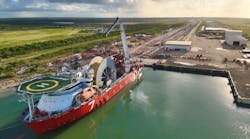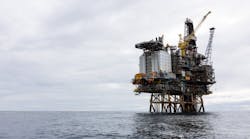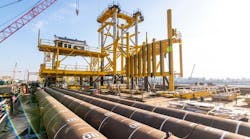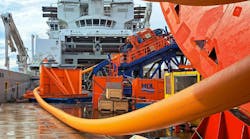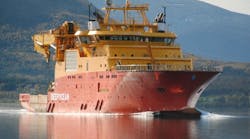API RP 14C has long beenthe standard for "Analysis, Design, Installation, and Testing of Basic Surface Safety Systems for Offshore Production Platforms." However, with the emphasis on "surface," it has also long been understood that the concepts did not directly translate to subsea facilities. It appears that engineering judgment and the series of Notices to Lessees (NTLs) issued by the Minerals Management Service (now Bureau of Safety and Environmental Enforcement) was all that was standing between a safe design and a possible subsea failure.
The answer to this dilemma lies in the primary differences between what API RP 14C has relied on almost exclusively for its primary protection (relief valves to protect platform facilities), and what subsea systems have relied on almost exclusively – full pressure containment. Another difference is the trend toward extremely deep HP/HT reservoirs in ultra-deepwater. Increasingly, such reservoirs challenge the limits of current technology and design, and some concession to the "full pressure containment" model is to be expected.
Policy makers and standard-setting authorities would be well advised to consider the adoption of standards for high-integrity pressure protection systems (HIPPS), as well as subsea processing. They should also account for a growing desire by the regulators to step back from prescribing the minimum required standards for subsea safety through NTLs.
Regulators ultimately want experienced industry personnel to establish the minimum standard rather than the regulators prescribing one through NTLs. This minimum standard should be based on accepted industry practice, working through the API. To address these concerns, the BSEE proposed to the API SC17 Committee that any document designed to address subsea safety be based on API RP 14C principles.
In turn, the API SC 17 Committee assigned a task group to adapt the principles of API RP 14C to an RP for subsea safety using today's standard industry practices. One important difference is that having a "minimum floor" implies that required expectations are established for everyone. That is more or less what a "standard" does. An RP provides a list of best industry practices that may or may not apply in every case. Those practices may not be minimums; rather, they are what the industry recognizes as acceptable. Therefore sound engineering judgment still must be applied.
It was also recognized that while a risk-based approach to safety was becoming almost universal, the imposition of a minimum floor through an almost prescriptive recommended practice did not preclude the use of the risk-based approach. This was true as long as the minimum prescriptive practices were applied where applicable.
One critical area that led to multiple reconsiderations was the scope break between the topside safety and subsea safety. Many in the industry want to set that break at the limits of a specific contractor's scope of work. However, it is important that the topside/subsea safety system interface be carefully managed from a pressure, temperature, and flow spec break with proper shutdowns and isolation to ensure proper personnel protection. This does not always make for clean scope-of-work breaks.
Another area that led to much discussion by the task group was the inclusion of chemical injection systems. There was much debate on whether check valves, often used subsea to prevent backflow into the umbilical system, should be considered as barriers and whether they are in fact part of the safety system. Generally, the belief was that a check valve was not a safety barrier due to the inability to test it with reverse flow, which would curtail the injections needed for flow assurance. Yet these systems and personnel were protected on the topside facilities by the application of API RP 14C beyond the scope break between API RP 14C and API RP 17V.
The final determination tended to hinge on having the RP incorporate current standard subsea design practices as applied by the industry, and only incorporate changes where industry practice is determined to be deficient. Given the good operating record of the subsea installations to date, there was no justification for any major changes to the generally accepted practices.
The development of a new recommended safety practice reinforces this author's belief that there are key differences between subsea to topsides to the point that API RP 14C is not applicable. Yet, it also reinforces the idea that the approach used in the development of the safe charts and safety analysis tables used by API 14C is a viable way to analyze the design to ensure safety and environmental soundness.
If used properly, an RP helps those with less experience understand the risks, particularly when applying risk-based management of safety. It sets a minimum floor. This was the task that BSEE asked the API to do. The recommendation here is that industry embrace one of the newest additions to API SC17 Recommended Practices: API RP 17V Recommended Practice for Analysis, Design, Installation, and Testing of Safety Systems for Subsea Applications.
Marc S. Young, PE
Chief Process Engineer
Xodus Group
This page reflects viewpoints on the political, economic, cultural, technological, and environmental issues that shape the future of the petroleum industry. Offshore Magazine invites you to share your thoughts. Email your Beyond the Horizon manuscript to David Paganie at[email protected].
